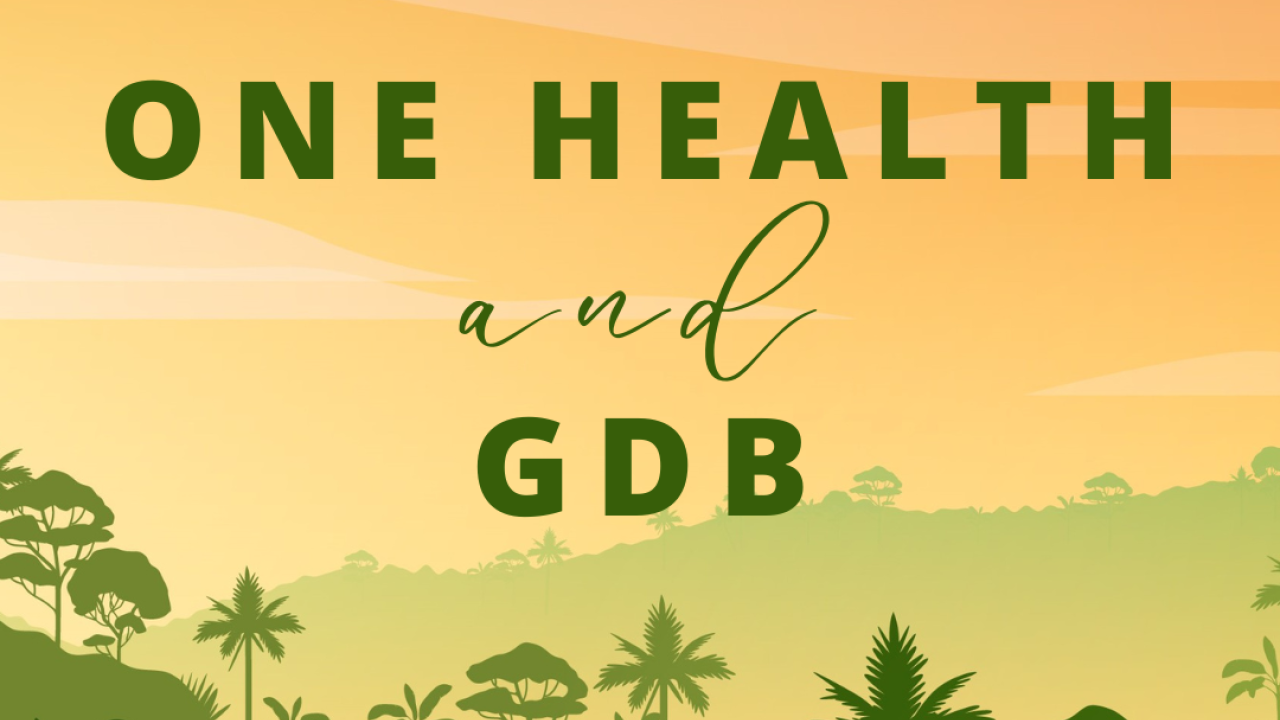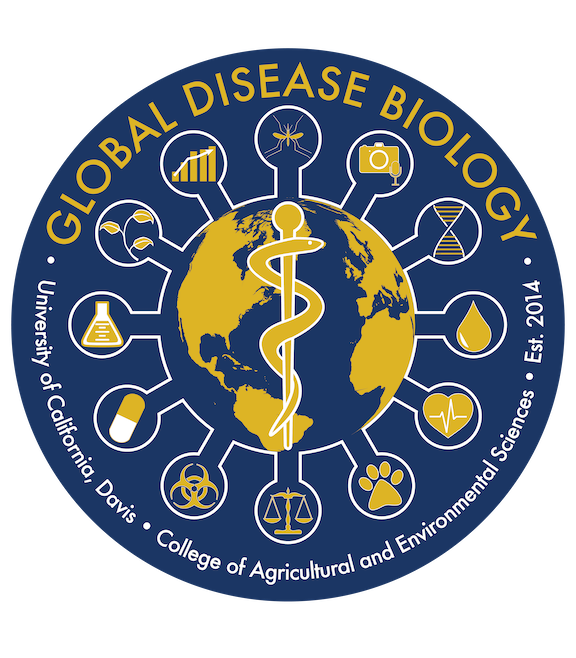
Plant Health in the Eyes of One Health
The One Health High-Level Expert Panel (OHHLEP) defines One Health as “an integrated, unifying approach that aims to sustainably balance and optimize the health of people, animals and ecosystems” [2].
The definition stresses the importance of taking into consideration all components in order to improve health for all. Plant health is usually less talked about when utilizing the One Health approach, even though it’s an essential part that directly affects the quality of life of all other health contributors [6]. Incorporating more plant health strategies would help strengthen other components and create more comprehensive plans.
Plants are the main source of food for many living creatures on Earth. In addition to food security, plants are a vital part of human health, as their quality and the pesticides they are treated with can directly affect human well-being [6]. This connection is often overlooked in conversations about human health. Plants make up the world we live in, as well as us from the inside. Including them in the multisectoral approach addressing global challenges would highlight this foundational element.
One Health in Action
E. coli outbreak caused by romaine lettuce in the United States and Canada
In 2019, a foodborne outbreak due to Shiga toxin-producing E. coli resulted in the hospitalization of several cases. Some patients developed hemolytic uremic syndrome (HUS), a type of kidney failure, but no deaths were reported. During that time, the US and Canada warned populations to avoid consuming romaine lettuce until further notice, which was unusual.
Many departments had to collaborate to identify the cause of the outbreak, trace the pathogen, and determine the contamination source—which was found to be romaine lettuce coming from the Central Valley in California. Due to the combined efforts, the outbreak was contained and officially ended within a few weeks [5].
Employing the One Health approach helped resolve the outbreak in a relatively short time through collaboration between various departments. One Health paves the way to better understand diseases, manage them, and set comprehensive control plans.
Top Rot in Maize: Kingdoms crossover of an opportunistic pathogen to invade plants
In 2016, a paper was published that identified the cause of top rot in maize—a disease that infects the top parts of maize and inhibits its growth, affecting crop yields. Farmers weren’t familiar with such a disease in maize, as it had not been previously observed. Plant pathologists worked to identify the cause of this newly discovered condition. Through whole-genome sequencing and molecular genetics, they discovered the pathogen behind it: Klebsiella pneumoniae.
What was new about this pathogen was that it had never been known to infect plants. It is widely recognized as an opportunistic pathogen in humans and animals, but not one that causes plant diseases. These findings required a multisectoral approach to better understand the disease and the reasons behind this unusual crossover.
Plant pathologists worked closely with human microbiologists and animal specialists to investigate the causes and consequences of such a case. All sectors needed to team up to develop a treatment for this plant disease.
This collaboration led scientists to discover antibiotic resistance in maize and the best combination to treat K. pneumoniae. This case also raised concerns about antibiotic resistance in plants and its relation to humans and animals, which further emphasized the importance of interdisciplinary work to solve emerging problems that affect individuals across different sectors [3], [4].
Careers in Plant Health
There are many careers one can pursue in plant health. They vary in focus and serve the development of many aspects that contribute to this field. Below is a list of careers pursued in plant health. The list is limited, but the field is wide and extensive.
Research & Diagnostics
- Plant Pathologist – Studies plant diseases and develops prevention or treatment strategies.
- Plant Virologist – Specializes in viruses that infect plants.
- Mycologist – Focuses on fungi affecting plant health.
- Nematologist – Studies plant-parasitic nematodes and their impact on crops.
- Plant Disease Diagnostician – Identifies plant diseases through lab and fieldwork.
- Plant Geneticist – Breeds disease-resistant or stress-tolerant plant varieties.
- Plant Microbiome Researcher – Investigates beneficial microbes and their role in plant immunity.
Field & Production-Based Roles
- Agronomist – Advises on crop production, soil management, and pest control.
- Crop Scout / Field Technician – Monitors fields for signs of pests or disease.
- Integrated Pest Management (IPM) Specialist – Designs and implements sustainable pest control strategies.
- Extension Specialist / Agent – Provides education and outreach to farmers and growers.
Regulatory & Policy Roles
- Plant Health Inspector / Quarantine Officer – Prevents the spread of pests and diseases across borders.
- Biosecurity Officer – Develops and enforces plans to protect agriculture from invasive threats.
- Policy Analyst (Plant Health/Biosecurity) – Works on regulations and strategies related to plant protection.
- Risk Analyst (Plant Health) – Assesses and manages risks associated with outbreaks.
Industry & Private Sector Roles
- Crop Protection Specialist – Develops or advises on the use of fungicides, insecticides, and biological controls.
- Seed Health Specialist – Ensures that commercially distributed seeds are free from pathogens.
- Plant Health Consultant – Advises nurseries, farms, or greenhouses on plant health and disease prevention.
Global & Environmental Roles
- Plant Health Specialist (e.g., FAO, USDA, WHO) – Works on plant health at the national or international level.
- Sustainable Agriculture Specialist – Promotes environmentally friendly farming practices.
- Urban Forestry Specialist – Manages the health of trees and plants in urban environments.
- Conservation Biologist (Plant Focus) – Protects native and endangered plant species.
🌿 Final Thoughts
Plant health is deeply connected to all other parts of life, but it is often left out of the conversation. Including it more intentionally in One Health approaches doesn’t just make sense, it’s necessary. When we take care of plants, we are taking care of ourselves, animals, and the planet too.
Sources
1. About one health [Internet]. Centers for Disease Control and Prevention [cited 2025 Jul 1];Available from: https://www.cdc.gov/one-health/about/index.html\
2. Tripartite and UNEP support OHHLEP’s definition of “one health” [Internet]. World Health Organization [cited 2025 Jul 1];Available from: https://www.who.int/news/item/01-12-2021-tripartite-and-unep-support-ohhlep-s-definition-of-one-health
3. Huang M, He P, He P, Wu Y, Munir S, He Y. Novel virulence factors deciphering klebsiella pneumoniae kpc4 infect maize as a crossing-kingdom pathogen: An emerging environmental threat [Internet]. International journal of molecular sciences2022 [cited 2025 Jul 1];Available from: https://pmc.ncbi.nlm.nih.gov/articles/PMC9785288/
4. P; HMY. [advances in humans and animals opportunistic pathogens from environment infecting plants by crossing kingdoms] [Internet]. Wei sheng wu xue bao = Acta microbiologica Sinica [cited 2025 Jul 1];Available from: https://pubmed.ncbi.nlm.nih.gov/27373067/
5. Rizzo DM, Lichtveld M, Mazet JAK, Togami E, Miller SA. Plant Health and its effects on food safety and security in a one health framework: Four case studies - one health outlook [Internet]. SpringerLink2021 [cited 2025 Jul 1];Available from: https://link.springer.com/article/10.1186/s42522-021-00038-7
6. Hoffmann V, Paul B, Falade T, Moodley A, Ramankutty N, Olawoye J, et al. A one health approach to plant health - cabi agriculture and Bioscience [Internet]. BioMed Central2022 [cited 2025 Jul 1];Available from: https://cabiagbio.biomedcentral.com/articles/10.1186/s43170-022-00118-2
